#albert vii of austria
Explore tagged Tumblr posts
Text
Portrait of the Archduke Albert and the Infanta Isabella
Artist: Studio of Peter Paul Rubens (Flemish, 1577-1640)
Date: c. 1615
Medium: Oil on canvas
Collection: The National Gallery, London, United Kingdom


The Archduke Albert and the Infanta Isabella
Description
The two portraits were made as pendants, or companion pieces, and would have hung side by side. The two figures are turned towards each other in the accepted tradition of pictures of betrothed or married couples, and they look out at us, as if we are witnesses of their union. They are the Archduke Albert of Austria and the Infanta (or Princess) Isabella, joint sovereigns of the Seventeen Provinces of the Spanish Netherlands. Sovereignty was granted to them by Isabella’s father, Philip II of Spain, on their marriage in 1599.
This was a tempestuous time in the history of the Netherlands, which had been ruled by Spain for generations. The Southern Provinces (Flanders) were, like Spain, Roman Catholic, but the Northern Provinces were predominantly Protestant and had fought hard for independence. Albert and Isabella were, in effect, rulers of Flanders only. While their predecessors had determined to Hispanicise Flanders with violent episodes of bitter warfare, Albert and Isabella had a strong sense of duty to the people as well as to the Spanish crown. They set out to create a sense of national identity – Roman Catholic, but with an independent character within the Spanish Imperial domains. They were the most benevolent of the long line of Habsburg incumbents and there was a lull in the worst of the violence. The prosperity this brought was recognised by the population, including Rubens, whose order book for portraits became quickly filled.
The couple were both patrons of the arts, and they influenced taste in painting and sculpture in particular. Albert created Rubens paintre de l’hostel, or court painter, along with two others, Jan Brueghel the Elder and Otto van Veen. They and the court architect, Wenzel Coebergher, became part of Albert and Isabella’s close circle. Albert was particularly fond of Rubens, who named his firstborn son after the Archduke. After Albert’s death in 1621, Isabella became sole sovereign. As a highly educated man, diplomat and devout Catholic, Rubens remained her trusted adviser in the struggle to maintain peace between the divided provinces. Isabella died in 1633, and the brief period of peace died with her.
The paintings are unlikely to be by Rubens’s own hand, but are studio copies. They were possibly made after two originals which are now lost but which are known through prints made after them. Two other portraits of Albert and Isabella that are definitely by Rubens were in his studio after his death and are now in the Kunsthistorisches Museum, Vienna.
#portrait#painting#male#female#archduke albert#infanta isabella#netherlands#costume#house of hasburg#european#peter paul rubens#flemish painter#albert vii of austria#spanish netherlands#isabella clara eugenia#european art#artwork
10 notes
·
View notes
Text

Equestrian portrait of Archduke Albert of Austria (1559-1621). By Peter Paul Rubens.
#peter paul rubens#haus habsburg#erzherzog#archduke albert of austria#house of habsburg#the netherlands#count of flanders#duke of brabant#equestrian portrait#albert of austria#albrecht vii of austria#in armour
15 notes
·
View notes
Text
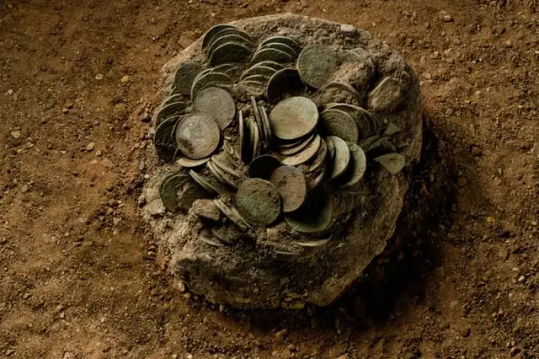

17th-Century Silver Coin Hoard Discovered in Wettin Germany
Archaeologists from the State Office for Monument Preservation and Archaeology Saxony-Anhalt (LDA) have discovered a large 17th century coin hoard during construction works at a farmstead in the town of Wettin, Germany.
Situated in the heart of Wettin, the farmstead has been maintained by the Altstadt Wettin e. V. since 2018. The organisation is dedicated to preserving the town’s cultural heritage, which is at risk of being demolished due to modern development.
The bourgeois farmstead dates from the 16th to 17th century and can be traced to the time of the end of the Thirty Years’ War via written sources. From 1681, the building served as the town’s pharmacy, as indicated by remnants of an 18th-century baroque stucco ceiling and an Apotheke vault.
Construction work at the farmstead has uncovered a hoard of 17th-century coins in the gate area leading to the central courtyard. Archaeologists found 285 silver coins in layers of compacted soil, which were sent to the restoration workshop of the LDA Saxony-Anhalt.
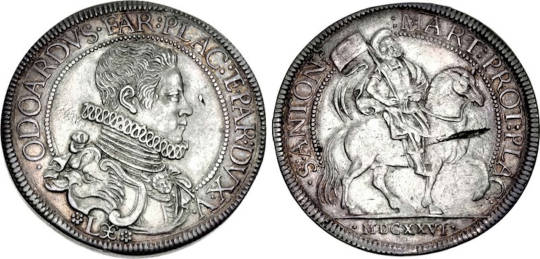

The hoard was likely deposited in the late 1650’s, with more than half of the coins being silver thalers, a currency used by several states of Northern Germany, first under the Holy Roman Empire, then by the German Confederation. The rest of the hoard consists of thaler fragments and various groschen coins.
Among the hoard are the so-called Schreckenberg grochen coins and Albertus thalers minted in the Spanish Netherlands. There are also coins minted by the German emperors, the Duchy of Brunswick-Lüneburg, the Archduke Albert VII of Austria, and King Philip IV of Spain.
According to the LDA: “In addition to its scientific significance, the Wettin coin find is also an excellent example of the important contributions that voluntary work in close cooperation with the responsible authorities for the preservation of buildings and archaeological monuments can make to our knowledge of the history of Saxony-Anhalt.”
By Mark Milligan.
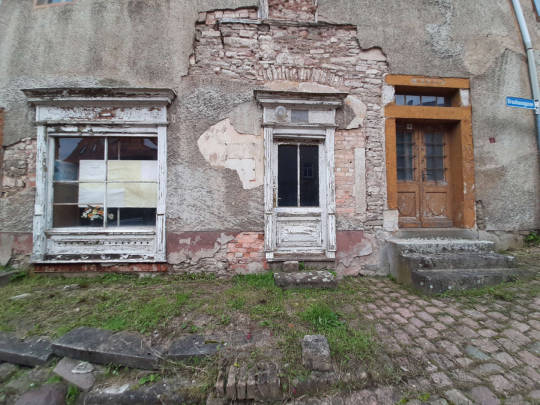
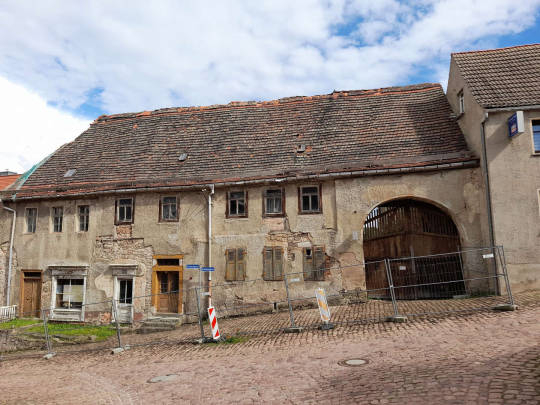

#17th-Century Silver Coin Hoard Discovered in Wettin Germany#silver#silver coins#silver thalers#collectable coins#treasure#ancient artifacts#archeology#archeolgst#history#history news#ancient history#ancient culture#ancient civilizations
281 notes
·
View notes
Text

1593-1600 Frans Pourbus the Younger - Albert VII, Archduke of Austria
(Musée des Beaux-Arts de Marseille)
75 notes
·
View notes
Text
Wives and Daughters of Holy Roman Emperors: Age at First Marriage
I have only included women whose birth dates and dates of marriage are known within at least 1-2 years, therefore, this is not a comprehensive list.
This list does not include women who died before their husbands were crowned Emperor. It spans between the beginning of the reign of Otto I (962 CE) and the end of the reign of Francis II (1806 CE).
The average age at first marriage among these women was 17. The sample size was 91 women. The youngest bride, Bianca Maria Sforza, was just 2 years old when she wed her first husband, who was himself 9. The oldest bride, Constance of Sicily, was 32 years old.
Adelaide of Italy, wife of Otto I, HRE: age 15 when she married Lothair II, King of Italy, in 947 CE
Liutgarde of Saxony, daughter of Otto I, HRE: age 15 when she married Conrad the Red, Duke of Lorraine, in 947 CE
Theophanu, wife of Otto II, HRE: age 17 when she married Otto in 972 CE
Cunigunde of Luxembourg, wife of Henry II, HRE: age 24 when she married Henry in 999 CE
Gisela of Swabia, wife of Conrad II, HRE: age 12 when she married Brun I of Brunswick in 1002 CE
Agnes of Poitou, wife of Henry III, HRE: age 18 when she married Henry in 1043 CE
Matilda of Germany, daughter of Henry III, HRE: age 11 when she married Rudolf of Rheinfelden in 1059 CE
Judith of Swabia, daughter of Henry III, HRE: age 9 when she married Solomon, King of Hungary in 1063 CE
Bertha of Savoy, wife of Henry IV, HRE: age 15 when she married Henry in 1066 CE
Agnes of Waiblingen, daughter of Henry IV, HRE: age 14 when she married Frederick I, Duke of Swabia in 1086 CE
Empress Matilda, wife of Henry V, HRE: age 12 when she married Henry in 1114 CE
Beatrice I, Countess of Burgundy, wife of Frederick I, HRE: age 13 when she married Frederick in 1156 CE
Beatrice, daughter of Frederick I, HRE: age 10 when she married Guillaume II, Count of Chalon in 1173 CE
Constance, Queen of Sicily, wife of Henry IV, HRE: age 32 when she married Henry IV in 1186 CE
Beatrice of Swabia, first wife of Otto IV, HRE: age 14 when she married Otto in 1212 CE
Maria of Brabant, second wife of Otto IV, HRE: age 24 when she married Otto in 1214 CE
Constance of Aragon, first wife of Frederick II, HRE: age 19 when she married Emeric of Hungary in 1198 CE
Isabella II of Jerusalem, second wife of Frederick II, HRE: age 13 when she married Frederick in 1225 CE
Isabella of England, third wife of Frederick II, HRE: age 21 when she married Frederick in 1235 CE
Margaret of Sicily, daughter of Frederick II, HRE: age 14 when she married Albert II, Margrave of Meissen in 1255 CE
Anna of Hohenstaufen, daughter of Frederick II, HRE: age 14 when she married John III Doukas Vatatzes in 1244 CE
Marie of Luxembourg, daughter of Henry VII, HRE: age 18 when she married Charles IV of France in 1322 CE
Beatrice of Luxembourg, daughter of Henry VII, HRE: age 13 when she married Charles I of Hungary in 1318 CE
Margaret II, Countess of Hainaut, wife of Louis IV, HRE: age 13 when she married Louis in 1324 CE
Matilda of Bavaria, daughter of Louis IV, HRE: age 10 when she married Frederick II, Margrave of Meissen in 1323 CE
Beatrice of Bavaria, daughter of Louis IV, HRE: age 12 when she married Eric XII of Sweden in 1356 CE
Anna von Schweidnitz, wife of Charles IV, HRE: age 14 when she married Charles in 1353 CE
Elizabeth of Pomerania, wife of Charles IV, HRE: age 16 when she married Charles in 1378 CE
Margaret of Bohemia, daughter of Charles IV, HRE: age 7 when she married Louis I of Hungary in 1342 CE
Catherine of Bohemia, daughter of Charles IV, HRE: age 14 when she married Rudolf IV, Duke of Austria in 1356 CE
Elisabeth of Bohemia, daughter of Charles IV, HRE: age 8 when she married Albert III, Duke of Austria in 1366 CE
Anne of Bohemia, daughter of Charles IV, HRE: age 16 when she married Richard II of England in 1382 CE
Margaret of Bohemia, daughter of Charles IV, HRE: age 8 when she married John III, Burgrave of Nuremburg in 1381 CE
Barbara of Cilli, wife of Sigismund, HRE: age 13 when she married Sigismund in 1405 CE
Elizabeth of Luxembourg, daughter of Sigismund, HRE: age 13 when she married Albert II of Germany in 1422 CE
Eleanor of Portugal, wife of Frederick III, HRE: age 18 when she married Frederick in 1452 CE
Kunigunde of Austria, daughter of Frederick III, HRE: age 22 when she married Albert IV, Duke of Bavaria in 1487 CE
Bianca Maria Sforza, wife of Maximilian I, HRE: age 2 when she married Philibert I, Duke of Savoy in 1474 CE
Margaret of Austria, daughter of Maximilian I, HRE: age 17 when she married John, Prince of Asturias in 1497 CE
Barbara von Rattal, daughter of Maximilian I, HRE: age 15 when she married Siegmund von Dietrichstein in 1515 CE
Dorothea of Austria, daughter of Maximilian I, HRE: age 22 when she married Johan I of East Frisia in 1538 CE
Isabella of Portugal, wife of Charles V, HRE: age 23 when she married Charles in 1526 CE
Maria of Austria, daughter of Charles V, HRE: age 20 when she married Maximilian II, HRE in 1548 CE
Joanna of Austria, daughter of Charles V, HRE: age 17 when she married John Manuel, Prince of Portugal in 1552 CE
Margaret of Parma, daughter of Charles V, HRE: age 14 when she married Alessandro de’ Medici, Duke of Florence, in 1536 CE
Elizabeth of Austria, daughter of Ferdinand I, HRE: age 16 when she married Sigismund II Augustus of Poland in 1543 CE
Anna of Austria, daughter of Ferdinand I, HRE: age 17 when she married Albert V, Duke of Bavaria in 1546 CE
Maria of Austria, daughter of Ferdinand I, HRE: age 15 when she married William of Julich-Cleves-Berg in 1546 CE
Catherine of Austria, daughter of Ferdinand I, HRE: age 16 when she married Francesco III Gonzaga in 1559 CE
Eleanor of Austria, daughter of Ferdinand I, HRE: age 27 when she married William I, Duke of Mantua in 1561 CE
Barbara of Austria, daughter of Ferdinand I, HRE: age 26 when she married Alfonso II d’Este in 1565 CE
Joanna of Austria, daughter of Ferdinand I, HRE: age 18 when she married Francesco I de’ Medici in 1565 CE
Anna of Austria, daughter of Maximilian II, HRE: age 21 when she married Philip II of Spain in 1570 CE
Elisabeth of Austria, daughter of Maximilian II, HRE: age 16 when she married Charles IX of France in 1570 CE
Anna of Tyrol, wife of Matthias, HRE: age 26 when she married Matthias in 1611 CE
Eleonora Gonzaga the Elder, wife of Ferdinand II, HRE: age 24 when she married Ferdinand in 1622 CE
Maria Anna of Austria, daughter of Ferdinand II, HRE: age 25 when she married Maximilian I, Elector of Bavaria in 1635 CE
Cecilia Renata of Austria, daughter of Ferdinand II, HRE: age 26 when she married Władysław IV of Poland in 1637 CE
Maria Anna of Spain, wife of Ferdinand III, HRE: age 25 when she married Ferdinand in 1631 CE
Maria Leopoldine of Austria, wife of Ferdinand III, HRE: age 16 when she married Ferdinand in 1648 CE
Eleonora Gonzaga the Younger, wife of Ferdinand III, HRE: age 21 when she married Ferdinand in 1651 CE
Mariana of Austria, daughter of Ferdinand III, HRE: age 15 when she married Philip IV of Spain in 1649 CE
Eleonore of Austria, daughter of Ferdinand III, HRE: age 17 when she married Michael I of Poland in 1670 CE
Maria Anna Josepha of Austria, daughter of Ferdinand III, HRE: age 24 when she married Johann Wilhelm II, Elector Palatine in 1678 CE
Margaret Theresa of Spain, wife of Leopold I, HRE: age 15 when she married Leopold in 1666 CE
Claudia Felicitas of Spain, wife of Leopold I, HRE: age 20 when she married Leopold in 1673 CE
Eleonore Magdalene of Neuberg, wife of Leopold I, HRE: age 21 when she married Leopold in 1676 CE
Maria Antonia of Austria, daughter of Leopold I, HRE: age 16 when she married Maximilian II Emanuel, Elector of Bavaria in 1685 CE
Maria Anna of Austria, daughter of Leopold I, HRE: age 25 when she married John V of Portugal in 1708 CE
Wilhelmine Amalie of Brunswick, wife of Joseph I, HRE: age 26 when she married Joseph in 1699 CE
Maria Josepha of Austria, daughter of Joseph I, HRE: age 20 when she married Augustus III of Poland in 1719 CE
Maria Amalia of Austria, daughter of Joseph I, HRE: age 21 when she married Charles VII, HRE in 1722 CE
Elisabeth Christine of Brunswick, wife of Charles VI, HRE: age 17 when she married Charles in 1708 CE
Maria Theresa of Austria, daughter of Charles VI, HRE: age 19 when she married Francis I, HRE in 1736 CE
Maria Anna of Austria, daughter of Charles VI, HRE: age 26 when she married Charles Alexander of Lorraine in 1744 CE
Maria Antonia of Bavaria, daughter of Charles VII, HRE: age 23 when she married Frederick Christian, Elector of Saxony in 1747 CE
Maria Anna Josepha of Bavaria, daughter of Charles VII, HRE: age 20 when she married Louis George of Baden-Baden in 1755 CE
Maria Josepha of Bavaria, daughter of Charles VII, HRE: age 26 when she married Joseph II, HRE in 1765 CE
Maria Christina, daughter of Francis I, HRE: age 24 when she married Albert Casimir, Duke of Teschen in 1766 CE
Maria Amalia, daughter of Francis I, HRE: age 23 when she married Ferdinand I, Duke of Parma in 1769 CE
Maria Carolina, daughter of Francis I, HRE: age 16 when she married Ferdinand IV & III of Sicily in 1768 CE
Maria Antonia, daughter of Francis I, HRE: age 14 when she married Louis XVI of France in 1770 CE
Maria Josepha of Bavaria, wife of Joseph II, HRE: age 26 when she married Joseph in 1765 CE
Maria Luisa of Spain, wife of Leopold II, HRE: age 19 when she married Leopold in 1764 CE
Maria Theresa of Austria, daughter of Leopold II, HRE: age 20 when she married Anthony of Saxony in 1787 CE
Maria Clementina of Austria, daughter of Leopold II, HRE: age 20 when she married Francis I of Sicily in 1797 CE
Maria Theresa of Naples, wife of Francis II, HRE: age 18 when she married Francis in 1790 CE
Marie Louise, daughter of Francis II, HRE: age 19 when she married Napoleon I of France in 1810 CE
Maria Leopoldina, daughter of Francis II, HRE: age 20 when she married Pedro I of Brazil and IV of Portugal in 1817 CE
Clementina, daughter of Francis II, HRE: age 18 when she married Leopold of Salerno in 1816 CE Marie Caroline, daughter of Francis II, HRE: age 18 when she married Frederick Augustus of Saxony in 1819 CE
34 notes
·
View notes
Text








Royal Deaths in History - 14th September
585 - Bidatsu, 30th Emperor of Japan.
775 - Constantine V, Emperor of Byzantium.
786 - Al-Hadi, 4th Abbasid caliph.
1164 - Sutoku, 75th Emperor of Japan.
1404 - Albert IV, Duke of Austria.
1435 - John, Duke of Bedford, son of King Henry IV of England.
1495 - Elizabeth, daughter of Henry VII of England and Elizabeth of York.
1982 - Princess Grace of Monaco.
6 notes
·
View notes
Text


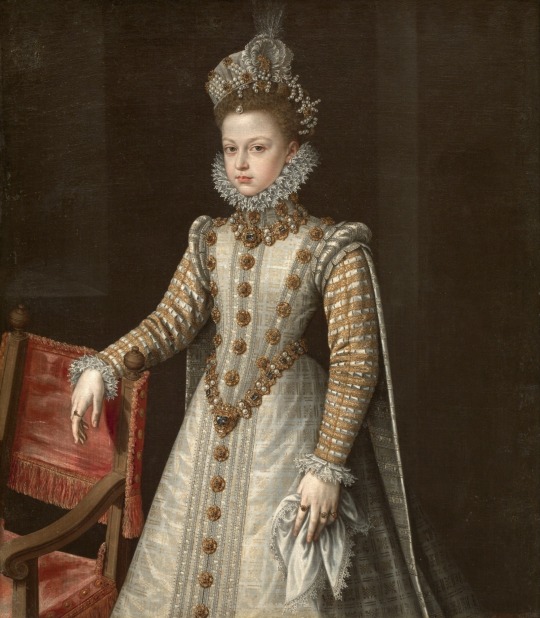
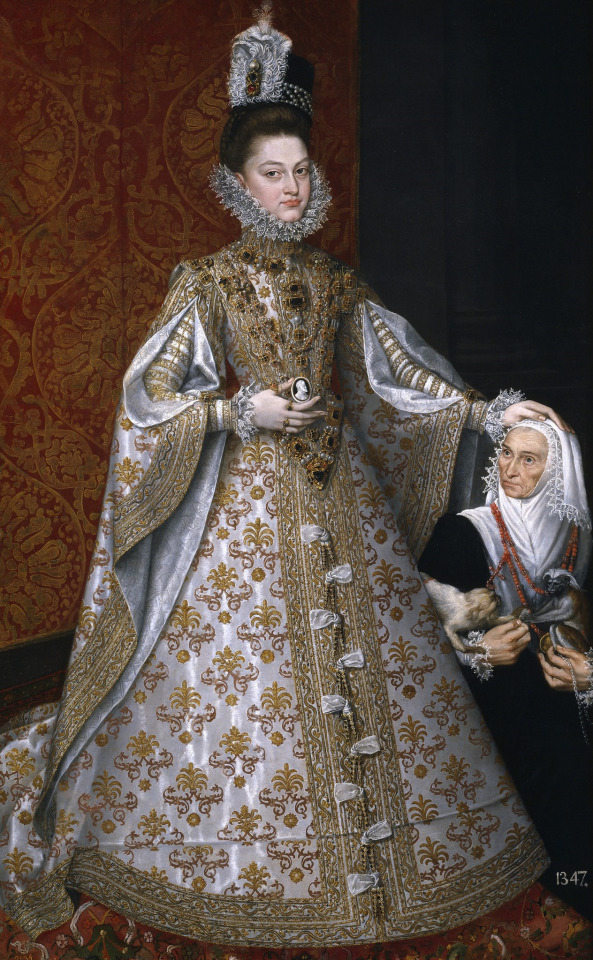




The Infanta Isabella Clara Eugenia (Spanish, 1566-1633): Sovereign of the Netherlands, Duchess of Lothier, Brabant, Limburg, Luxemburg, and Guelders, Margravine of Namur, Countess Palatine of Burgundy, Countess of Flanders, Artois and Hainaut. [source]
1. Attributed to Alonso Sánchez Coello (1531-1588) and Workshop, Isabella Clara Eugenia and Catharina, Daughters of Philip II, King of Spain, c. 1569-70, oil on canvas; The Royal Collection Trust, Green Drawing Room, Buckingham Palace.
2. Alonso Sánchez Coello (Spanish,1531-1588), The Infantas Isabel Clara Eugenia and Catalina Micaela, circa 1575, oil on canvas, Museo del Prado, Madrid.
3. Alonso Sánchez Coello (Spanish, 1531-1588), Infanta Isabella Clara Eugenia, 1577, oil on canvas, Museo del Prado, Madrid.
4. Alonso Sánchez Coello, The Infanta Isabella Clara Eugenia and Magdalena Ruiz, 1586, oil on canvas, Museo Nacional del Prado, Madrid.
5. Juan Pantoja de la Cruz (Spanish, 1553-1608), The Infanta Isabel Clara Eugenia, 1598-99, oil on canvas, Museo del Prado, Madrid.
6. Frans Pourbus the Younger (Flemish, 1569-1622), The Infanta Isabella Clara Eugenia, Archduchess of Austria, c. 1598-1600, oil on canvas.
7. Peter Paul Rubens and Workshop (Flemish, 1577-1640), Portrait of Archduchess Isabella Clara Eugenia, Spanish Regent of the Low Countries, as a Nun, 1625, oil on canvas.
8. Anthony van Dyck (Flemish, 1599-1641), The Infanta Isabella Clara Eugenia, c. 1630, oil on canvas, Walker Art Gallery.
Infanta Isabella Clara Eugenia (Spanish, Segovia, 1566 - 1633, Brussels) was the daughter of Philip II of Spain and his third wife, Elizabeth of Valois, who died after a miscarriage when the Infanta was only two. Her sister Catalina Micaela was one year younger.
She became the sovereign of the Spanish Netherlands in the Low Countries and the north of modern France with her husband, Archduke Albert VII of Austria. She was one of the most powerful women in Europe at the time. The couple had no children. She joined the Sisters of St. Clare order after her co-regent's death.
#infanta isabel clara eugenia#spanish royalty#powerful women#alonso sánchez coello#juan pantoja de la cruz#frans pourbus the younger#peter paul rubens#anthony van dyck#16th century#17th century#european history
40 notes
·
View notes
Text

Albert VII, Archduke of Austria by Jan Brueghel the Elder and Peter Paul Rubens, 1615.
#classic art#painting#peter paul rubens#jan brueghel the elder#flemish artist#17th century#portrait#male portrait#balcony#prince#habsburg#black clothing#chair#palace#tervuren castle#belgium#river
12 notes
·
View notes
Text

Foto di famiglia: nove re d'Europa per il funerale di re Edward VII a Londra, 20 maggio 1910.
Da sinistra a destra: Haakon VII di Norvegia, lo Zar di Bulgaria Ferdinand, Manuel II del Portogallo, il Kaiser Wilhelm II di Germania, Giorgio I di Grecia, Albert I del Belgio. Seduti:: Alfonso XIII di Spagna, George V del Regno Unito, Frederick VIII di Danimarca.
Assenti Vittorio Emanuele III d'Italia, il re di Serbia, quello di Svezia, l'olandese e l'imperatore di Austria- Ungheria.
via https://x.com/silviaplathx/status/1852027245109326061
1 note
·
View note
Text
Events 7.31 (before 1940)
30 BC – Battle of Alexandria: Mark Antony achieves a minor victory over Octavian's forces, but most of his army subsequently deserts, leading to his suicide. 781 – The oldest recorded eruption of Mount Fuji (Traditional Japanese date: Sixth day of the seventh month of the first year of the Ten'o (天応) era). 1009 – Pope Sergius IV becomes the 142nd pope, succeeding Pope John XVIII. 1201 – Attempted usurpation by John Komnenos the Fat for the throne of Alexios III Angelos. 1423 – Hundred Years' War: Battle of Cravant: A Franco-Scottish army is defeated by the Anglo-Burgundians at Cravant on the banks of the river Yonne. 1451 – Jacques Cœur is arrested by order of Charles VII of France. 1492 – All remaining Jews are expelled from Spain when the Alhambra Decree takes effect. 1498 – On his third voyage to the Western Hemisphere, Christopher Columbus becomes the first European to discover the island of Trinidad. 1618 – Maurice, Prince of Orange disbands the waardgelders militia in Utrecht, a pivotal event in the Remonstrant/Counter-Remonstrant tensions. 1655 – Russo-Polish War (1654–67): The Russian army enters the capital of the Grand Duchy of Lithuania, Vilnius, which it holds for six years. 1658 – Aurangzeb is proclaimed Mughal emperor of India. 1703 – Daniel Defoe is placed in a pillory for the crime of seditious libel after publishing a politically satirical pamphlet, but is pelted with flowers. 1715 – Seven days after a Spanish treasure fleet of 12 ships left Havana, Cuba for Spain, 11 of them sink in a storm off the coast of Florida. A few centuries later, treasure is salvaged from these wrecks. 1741 – Charles Albert of Bavaria invades Upper Austria and Bohemia. 1763 – Odawa Chief Pontiac's forces defeat British troops at the Battle of Bloody Run during Pontiac's War. 1777 – The U.S. Second Continental Congress passes a resolution that the services of Gilbert du Motier, Marquis de Lafayette "be accepted, and that, in consideration of his zeal, illustrious family and connexions, he have the rank and commission of major-general of the United States." 1790 – The first U.S. patent is issued, to inventor Samuel Hopkins for a potash process. 1856 – Christchurch, New Zealand is chartered as a city. 1865 – The first narrow-gauge mainline railway in the world opens at Grandchester, Queensland, Australia. 1874 – Patrick Francis Healy became the first African-American inaugurated as president of a predominantly white university, Georgetown University. 1904 – Russo-Japanese War: Battle of Hsimucheng: Units of the Imperial Japanese Army defeat units of the Imperial Russian Army in a strategic confrontation. 1917 – World War I: The Battle of Passchendaele begins near Ypres in West Flanders, Belgium. 1932 – The NSDAP (Nazi Party) wins more than 38% of the vote in German elections. 1938 – Bulgaria signs a non-aggression pact with Greece and other states of Balkan Antanti (Turkey, Romania, Yugoslavia). 1938 – Archaeologists discover engraved gold and silver plates from King Darius the Great in Persepolis.
0 notes
Photo
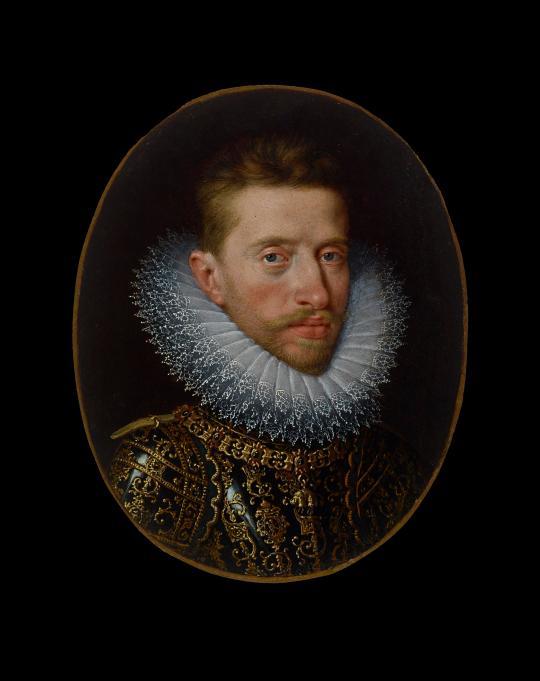
Archduke Albert VII of Austria (1559–1621), Wearing the Order of the Golden Fleece
Frans Pourbus the Younger, c. 1600 Oil on Card
67 notes
·
View notes
Text

Portrait of the Infanta Isabella
Artist: Peter Paul Rubens (Flemish, 1577–1640)
Title: Portrait of Isabella Clara Eugenia regent of the Netherlands
Genre: Portrait
Date: circa 1615
Medium: Oil on Canvas
Collection: National Gallery, Westminster, England
Isabella Clara Eugenia (Spanish: Isabel Clara Eugenia; 12 August 1566 – 1 December 1633), sometimes referred to as Clara Isabella Eugenia, was sovereign of the Spanish Netherlands, which comprised the Low Countries and the north of modern France with her husband, Archduke Albert VII of Austria.
Their reign is considered the Golden Age of the Spanish Netherlands, which saw a revival of its economy and arts after a peace was concluded with the break-away Dutch Republic. Isabella was one of the most powerful women in 16th- and 17th-century Europe.
#portrait#17th century painting#infanta isabella#oil on canvas painting#isabella clara eugenia#spanish netherlands#17th century europe#peter paul rubens#flemish painter#spanish#spanish nobility
22 notes
·
View notes
Photo






The Low Countries were always supposed to be governed by members of the ruling house, but there were insufficient legitimate men to fulfil this role - hence the recruitment of the bastard Don John. Women stepped into the breach. For more than half the sixteenth century, the governors were female - Margaret of Austria, Mary of Hungary, and Margaret of Parma, who was both a batarde and a woman. In 1598, Philip II ceded outright the government of the Spanish Low Countries to his daughter Isabella and her husband, Albert, who was Philip’s nephew several times over. Throughout her marriage, Isabella referred to Albert as “my cousin”.
The Habsburgs: To Rule the World - Martyn Rady
#Margaret of Austria#John of Austria#mary of hungary#margaret of parma#Isabella Clara Eugenia of spain#albert vii#house of habsburg#long live the queue
46 notes
·
View notes
Text
CONFIRMED ATTENDEES TO QUEEN ELIZABETH II'S STATE FUNERAL:
Foreign Royalty
King Willem-Alexander and Queen Maxima 🇳🇱
Queen Beatrix 🇳🇱
King Felipe VI and Queen Letizia 🇪🇸
King Juan Carlos I and Queen Sofía 🇪🇸
Emperor Naruhito and Empress Masako 🇯🇵
King Phillipe and Queen Mathilde 🇧🇪
Grand Duke Henri and Grand Duchess Maria Theresa 🇱🇺
King Tupou VI 🇹🇴
King Carl XVI Gustaf and Queen Silvia 🇸🇪
Queen Margrethe II and Crown Prince Frederik 🇩🇰
King Harald V and Queen Sonja 🇳🇴
Prince Albert II and Princess Charlene 🇲🇨
Sheikh Tamim bin Hamad Al Thani (Emir of Qatar)🇶🇦
King Jigme Khesar and Queen Jetsun Pema 🇧🇹
Yang di-Pertuan Agong Abdullah & Raja Permaisuri Agong Tunku of Malaysia 🇲🇾
Hereditary Prince Alois & Hereditary Princess Sophie 🇱🇮
King Tūheitia Potatau Te Wherowhero VII
Sultan Haitham 🇴🇲
Sultan Hassanal 🇧🇳
Crown Prince Moulay Hassan 🇲🇦
Prince Faisal bin Turki Al Saud 🇸🇦
Sheikh Mohamed bin Zayed Al Nahyan 🇦🇪
Crown Prince Mishal Al-Ahmad Al-Jaber Al-Sabah and 🇰🇼
King Letsie III 🇱🇸
King Abdullah II and Queen Rania 🇯🇴
Crown Prince Hussein 🇯🇴
King Hamad bin Isa bin Salman Al Khalifa and Crown Prince Salman bin Hamad Al Khalifa 🇧🇭
Deposed Royalty + Distant Family Relations
Margareta (Custodian of the Crown) and Prince Radu 🇷🇴
Queen Anne-Marie 🇬🇷
Crown Prince Palovs and Crown Princess Marie Chantal 🇬🇷
Crown Prince Alexander 🇷🇸
Prince Emanuele of Savoy
Tsar Simeon II 🇧🇬
Maximilian (Margrave of Baden), Prince Bernhard and Hereditary Princess Stephanie of Baden
Prince Philipp and Princess Saskia of Hohenlohe - Langenburg
Prince Donatus (Landgrave of Hesse)
Archduke Karl of Austria
Lady Pamela Hicks
Foreign Heads of State and Governments
President Joe Biden & First Lady Jill Biden 🇺🇸
President Michael D Higgins and Taoiseach Micheál Martin 🇮🇪
President Gitanas Nausėda and First Lady Dina Nausėda 🇱🇹
President Egils Levits and First Lady Andra Levite 🇱🇻
President Andrzej Duda and First Lady Agata Kornhauser-Duda 🇵🇱
President Isaac Herzog 🇮🇱
Jair Bolsonaro 🇧🇷
President Sergio Mattarella 🇮🇹
President Marcelo Rebelo de Sousa 🇵🇹
President Yoon Suk-yeol 🇰🇷
President Paula-Mae Weekes 🇹🇹
President Frank-Walter Steinmeier 🇩🇪
President Sauli Niinistö & Mrs Jenni Haukio 🇫🇮
Prime Minister Andrew Holness 🇯🇲
Prime Minister Justin Trudeau 🇨🇦
President Ranil Wickremesinghe 🇱🇰
President Emmanuel Macron 🇫🇷
President Katalin Novák 🇭🇺
President Alexander van der Bellen and First Lady Doris Schmiedauer 🇦🇹
Prime Minister Jacinda Ardern 🇳🇿
Prime Minister Anthony Albanese 🇦🇺
Prime Minister James Marape 🇵🇬
President Cyril Ramaphosa 🇿🇦
President Hage Geingob 🇳🇦
President Zoran Milanović 🇭🇷
President George Vella 🇲🇹
Afioga Tuimalealiʻifano Vaʻaletoʻa Sualauvi II 🇼🇸
President Droupadi Murmu 🇮🇳
Prime Minister Sheikh Hasina 🇧🇩
President Alar Karis 🇪🇪
President Zuzana Čaputová 🇸🇰
Prime Minister Petr Fiala 🇨🇿
President Ignazio Cassis 🇨🇭
Prime Minister Shehbaz Sharif 🇵🇰
Prime Minister Mostafa Madbouly 🇪🇬
President Salome Zourabichvili 🇬🇪
President Ali Bongo Ondimba 🇬🇦
President William Ruto 🇰🇪
First Lady Olena Zelenska 🇺🇦
Prime Minister Luvsannamsrain Oyun-Erdene 🇲🇳
President Guðni Jóhannesson and First Lady Eliza Reid 🇮🇸
President Nicos Anastasiades 🇨🇾
Prime Minister Joseph Ngute 🇨🇲
President Halimah Yacob 🇸🇬
President Dame Sandra Mason 🇧🇧
Prime Minister Pravind Jugnauth 🇲🇺
President Ibrahim Mohamed Solih and First Lady Fazna Ahmed 🇲🇻
President Nana Akufo-Addo 🇬🇭
Prime Minister Frank Bainimarama 🇫🇯
Governmental Representatives
Marcelo Ebrard (Secretary of Foreign Affairs) 🇲🇽
High Commissioner Ralph Goodale 🇨🇦
Ambassador Igor Pokaz 🇭🇷
Vice President Wang Qishan 🇨🇳
Foreign Minister Narayan Khakda 🇳🇵
Former President Dr Joyce Banda 🇲🇼
Captains Regent Oscar Mina and Paolo Rondelli 🇸🇲
Irene Marcos 🇵🇭
Governor Generals
Governor General Sir Patrick Allen 🇯🇲
Governor General Mary Simon 🇨🇦
Governor General Dame Cindy Kiro 🇳🇿
Governor General David Hurley 🇦🇺
Governor General Sir Bob Dadae 🇵🇬
Governor General Dame Froyla Tzalam 🇧🇿
Governor General Dame Cécile La Grenade 🇬🇩
Governor General Tofiga Vaevalu Falani 🇹🇻
Governor General Sir David Vunag 🇸🇧
Governor General Dame Susan Dougan 🇻🇨
Acting Governor-General Errol Charles 🇱🇨
Governor General Sir Cornelius A. Smith 🇧🇸
Governor General Sir Rodney Williams and Lady Williams 🇦🇬
International organisations
Charles Michel (President) 🇪🇺
Ursula von der Leyen (President of European Commission)
Jens Stoltenberg (Secretary General of NATO)
Earle Courtenay Rattray (Chief of Staff to UN Secretary General)
Baroness Scotland (Secretary-General of the Commonwealth)
Sir Don McKinnon (Former Secretary-General of the Commonwealth)
Religious Leaders
Secretary of State Cardinal Pietro Parolin 🇻🇦
Foreign Minster Archbishop Paul Gallagher 🇻🇦
Maybe attending -
President Barack Obama and First Lady Michelle Obama 🇺🇸
#I'll keep updating as more confirmation comes#qeii funeral attendees#queen elizabeth ii funeral#19.09.2022#foreign royalty#heads of states
323 notes
·
View notes
Text
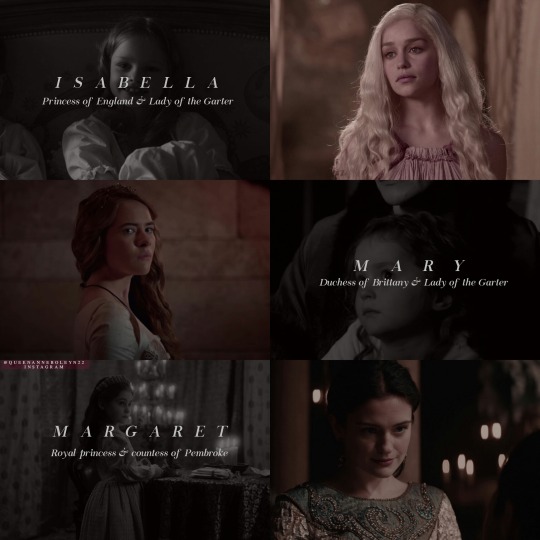
"The chroniclers and poets of the later Middle Ages credited Edward III with many successes, among which the production of a large family rated highly. The king had a total of twelve children, of whom no fewer than nine-five sons and four daughters-survived to maturity. Historians have not always been enthusiastic about the generous provisions made for this large family. Edward's very fecundity, viewed by fourteenth-century writers as a sure sign of God's grace, has been seen as a political liability because it exhausted resources, created a political imbalance between the crown and the younger branches of the royal family, and led ultimately to the deposition of Richard II and the Wars of the Roses." - Edward III and his family, W.M. Ormrod.
Margaret of England was a royal princess born in Windsor, the daughter of King Edward III of England and his consort, Philippa of Hainault. Margaret would be the last princess born to a reigning English monarch for over a century, until the birth of Elizabeth of York in 1466. She was also known as Margaret of Windsor. Margaret's first marriage prospect was Albert III of Austria but this changed due to politics at the time. A few years later she was affianced to John of Blois, son of Charles of Blois and rival of John V of Brittany to the Breton throne; however, this engagement was abandoned because her sister Mary was already betrothed to John IV of Brittany. Margaret was raised with John Hastings, 2nd Earl of Pembroke, son of Laurence Hastings, 1st Earl of Pembroke and his wife Agnes, the daughter of Roger Mortimer with whom as children they had a close companionship. On 13 May 1359, she became the wife of John Hastings in the same week as her brother John.
Isabella was Edward and Philippa's second child, and eldest daughter. Named after her paternal grandmother, Isabella of France, Isabella is believed to have been her father's favourite daughter, but less close to her mother. Born at Woodstock Palace, in Oxfordshire, on 16 June 1332, she was a baby who was much pampered by her doting parents. She slept in a gilded cradle lined with taffeta and covered with a fur blanket. Her gowns were of imported Italian silk, embroidered with jewels and fur-lined. Isabella had, along with her siblings, a household of servants which included a personal chaplain, musicians, a noble governor and governess, and three ladies-in-waiting as well as a staff of grooms, esquires, clerks, butlers, cooks, and other attendants. As a child, Isabella was sent to the household of William and Elizabeth St Omer, which also included Isabella's older brother Edward and younger sister Joan.Described as being over-indulged, wilful and wildly extravagant, Isabella – unusually for the times – remained unmarried until the age of 33. She had previously been the subject of various betrothal proposals; however, these had all failed to come to fruition. On 15 November 1351, when she was 19 years old, five ships were instructed to take her to Gascony where she was to marry Bernard d'Albret as had been previously arranged. He was the second eldest son of Bernard Ezi IV, Lord of Albret. At the last moment before departure, however, Isabella changed her mind, and the marriage was called off. Her father does not appear to have been angry at Isabella for her capricious behaviour as he granted her custody of Burtsall Priory in Yorkshire in 1355. He also settled the sum of 1,000 marks per annum on her. Eventually, she was permitted to marry Enguerrand VII, Lord of Coucy, a wealthy French lord with whom she had fallen in love. Seven years her junior, he was the son and heir of Engu.
In November 1365, Isabella and her husband were permitted to enter France; their first daughter, Marie, was born at the family lands at Coucy in April 1366. They later returned for a visit to England; on this occasion, Enguerrand was made Earl of Bedford on 11 May 1366, which made Isabella Countess of Bedford as well as Lady of Coucy. After the birth of Isabella's second daughter, Philippa, in 1367, Enguerrand and Isabella were also made Count and Countess of Soissons by Edward. Because her husband also served the King of France as a military leader, he was frequently away from home; consequently, Isabella, though living principally with Enguerrand at Coucy, made frequent visits to her family in England. She was made a Lady of the Garter in 1376.
Mary of Waltham was born at Bishop’s Waltham Palace on 10 October 1344 as the daughter of Edward III of England and Philippa of Hainault. Her future husband John V, Duke of Brittany was already in England as a War of Succession was going on in Brittany, and his mother had sought the support of England. He had been born in 1339 and in return for England’s support he was promised to one of Edward’s daughters. They were officially betrothed at the age of one and five respectively. They spent most of their childhood together and must have known each other quite well. They officially married around 3 July 1361 at Woodstock Palace, and a record of wedding dress survives to this day. The tunic and mantle were made from two types of cloth of gold, and the mantle was quite long. It was lined with 600 trimmed minivers (light grey or white fur) and 40 ermine. The couple did not immediately set out for Brittany though plans were made for their departure.
#perioddramaedit#history#edit#history edit#edward iii#isabella of england#isabella plantagenent#mary of waltham#philippa of hainault#edward iii plantagenet#14th century#royalty#margaret of england#lady of the garter#english history#middle ages#medieval history#anastasia tsilimpiou#alicia agneson#emilia clarke#royal princess#joan of kent#john of gaunt#katherine swynford#edward of woodstock#Enguerrand VII#british history#women in history#women of history#margaret of windsor
60 notes
·
View notes
Text


Isabella Clara Eugenia (12 August 1566 – 1 December 1633):
“On July 13, 1621, Albert VII, Archduke of Austria and co-sovereign of the Habsburg Netherlands, died. His wife Isabella Clara Eugenia—Infanta of Spain and daughter of the late king Philip II of Spain—was appointed by Philip IV of Spain as Governor of the Spanish Netherlands, which was an acceptable title for women at the time. On July 25, 1621, Isabel accepted the governance of the territories, as she had promised to her husband. At that time, the political and military situation in Europe was extremely complicated, as the Thirty Years’ War began in 1618 and the Eighty Years’ War resumed in 1621, keeping Philip IV and his aunt Isabella greatly preoccupied.”
50 notes
·
View notes